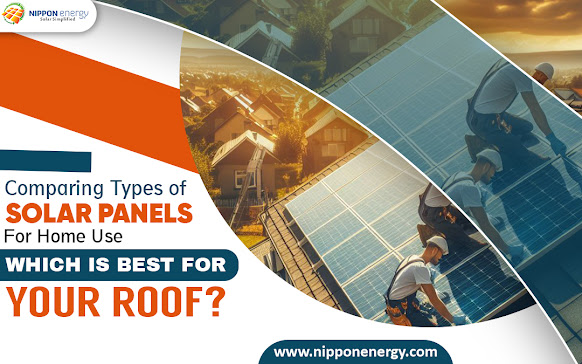Comparing Types of Solar Panels for Home Use: Which is Best for Your Roof?
If you’re on the hunt for ways to power your home with that great big ball of fire in the sky, you’ve come to the right place. Residential solar panel installation in Los Angeles is an increasingly popular option for residential energy needs, and with good reason – they’re eco-friendly, cost-effective in the long run, and make sense in our sun-drenched regions.
But with all the solar panel types out there, how do you choose? Well, pour yourself a tall glass of lemonade, and let’s explore the main contenders vying for a spot on your rooftop.
Monocrystalline Silicon: The Academic Overachiever
Think of monocrystalline silicon panels as the valedictorians of the solar world. Made from a single silicon crystal, they’re the most efficient at converting sunlight to electricity. While their upfront costs are a bit steeper, these overachievers deliver excellent performance and great longevity.
However, they can be shaded fairly easily by tree branches or neighboring buildings, which dents their productivity. If you’ve got an unobstructed rooftop with no pesky shadows, monocrystalline is an A+ choice.
Polycrystalline Silicon: The Reliable Workhorse
If monocrystalline panels are the academics, polycrystalline is more like the solid, hard-working tradespeople. Rather than a single crystal, they’re made from multiple silicon crystals melted together.
That process makes polycrystalline panels more affordable, though slightly less efficient than their monocrystalline cousins. Polycrystalline panels can better tolerate partial shading, and they tend to have excellent heat tolerance to keep on trucking through those scorching SoCal summers.
Thin-Film: The Unconventional Artists
Want to go a little avant-garde with your solar choice? Enter thin-film solar panels, the Artists of the solar realm. Rather than silicon crystals, these panels use other photovoltaic materials like cadmium telluride or amorphous silicon.
Thin-film has a couple of appealing traits—the panels are lightweight and flexible, able to conform to unique rooftop shapes. They’re also efficient in high temperatures and low-light conditions. However, they tend to be less efficient overall at converting sunlight and require more roof space.
So, if you’ve got an oddly sloped or curved rooftop that would challenge traditional panels, thin-films out-of-the-box thinking could be a creative solution!
The Solar Panel Financials: Upfront vs Long-Term
Okay, solar truth time – whichever type you choose, solar panel installation in Kern County or your Los Angeles home won’t come cheap upfront. Quality equipment and professional installation make this a major investment.
But!! Here’s where it gets brilliant. Most residential solar systems pay for themselves through energy savings in just 5-10 years. After that, you’re getting free electricity for the remaining 15-25 year lifespan of the panels. Serious long-term savings there!
Plus, federal tax credits, local rebates, and other incentives can help offset the upfront hit. So don’t let sticker shock scare you—solar pays you back bigtime down the road.
The Solar-Powered Bottom Line
Well, there you have it—a crash course in the main solar panel types fit for residential rooftops. Whether you prefer academic overachievers, reliable workhorses, or unconventional artists, there’s a solar solution ready to power your home with clean, renewable energy for decades to come. Whichever solar path you choose, you’ll be basking in those sweet rays and saving some serious green in the process!

.jpg)

Comments
Post a Comment